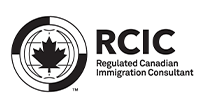The Strong Borders Act: A Turning Point for Canada’s Asylum and Immigration Landscape
On the heels of increasing global migration pressures and rising concerns about transnational crime, Canada has tabled a transformative piece of legislation — The Strong Borders Act. Introduced by the federal government through Public Safety Canada, this legislation proposes sweeping changes across several acts, including the Immigration and Refugee Protection Act (IRPA), the Controlled Drugs and Substances Act, and the Proceeds of Crime (Money Laundering) and Terrorist Financing Act.
While the Act addresses national security, cybercrime, money laundering, and drug trafficking, one of its most significant components — and arguably most controversial — is the proposed tightening of Canada’s asylum and refugee protection framework.
This article breaks down the Strong Borders Act in detail, with a focus on how it will affect asylum seekers, claimants, and newcomers navigating Canada’s immigration system.
Why the Strong Borders Act?
The Government of Canada argues that the Strong Borders Act is a necessary step to modernize enforcement tools, keep up with evolving threats, and protect the integrity of the immigration system. According to Public Safety Canada, the proposed legislation will give law enforcement agencies like the RCMP and Canada Border Services Agency (CBSA) the tools they need to better safeguard Canadian borders.
But for asylum seekers, these changes will significantly alter how — and when — they can seek protection in Canada.
Key Changes to the Asylum System
1. New Ineligibility Provisions for Asylum Claims
One of the most profound changes introduced in the Strong Borders Act is the ineligibility of certain asylum claims based on how and when the claim is made. Under the proposed legislation:
-
Individuals who make an asylum claim more than one year after arriving in Canada will be deemed ineligible if they entered the country after June 24, 2020.
-
Those who cross into Canada from the United States at a location between official ports of entry and file a claim more than 14 days after entry will also be ineligible to have their claims referred to the Immigration and Refugee Board (IRB).
This could affect thousands of claimants annually, including:
-
International students
-
Temporary foreign workers
-
Visitors who overstay and later seek protection
While these individuals may still apply for a Pre-Removal Risk Assessment (PRRA) — a process used to assess whether someone would face risk if removed — PRRAs have a much higher refusal rate than full asylum claims reviewed by the IRB.
2. Simplification and Digitization of the Asylum Process
On a more positive note, the legislation seeks to streamline the application process for refugee claimants:
-
A single digital form will be used for claims made both at ports of entry and inland IRCC offices.
-
This should reduce administrative delays and allow for faster IRB referral and decision-making.
The aim is to create a consistent and transparent process for all claimants, regardless of where they submit their claim.
3. Efficiency Measures for Case Processing
The Act also proposes:
-
Faster referral of complete claims to the IRB for adjudication.
-
Same-day removal orders for claims that are withdrawn.
-
Removal of inactive cases from the system to reduce backlogs and improve overall efficiency.
These measures, while meant to enhance system performance, may increase the pressure on vulnerable claimants who need more time or support to prepare their cases.
4. Support for Vulnerable Claimants
Recognizing the unique challenges faced by certain individuals, the Act includes measures to support:
-
Minors
-
People with disabilities
-
Those who may not understand the legal process
Under the new law, these individuals may be assigned designated representatives to help them through IRCC and CBSA proceedings. This is a crucial protection mechanism that aligns with Canada’s commitment to international human rights obligations.
Broader Immigration-Related Changes in the Act
In addition to asylum-related amendments, the Strong Borders Act also proposes the following immigration system enhancements:
1. Information Sharing
The Act seeks to:
-
Allow IRCC to share client data (identity, status, immigration history) with other federal, provincial, and territorial agencies through formal agreements.
-
Enable cross-program data sharing within IRCC, such as using permanent residence data for processing citizenship applications.
-
Support the development of regulations for interdepartmental data sharing, allowing for greater cooperation between federal entities like IRCC, CBSA, and CSIS.
This move is designed to create a more connected, responsive system, but it also raises privacy considerations.
2. Control Over Immigration Documents
IRCC will have new powers to:
-
Cancel, suspend, or amend immigration documents in groups, not just individually.
-
Temporarily pause acceptance or processing of applications when necessary for public health or national security.
This could be particularly relevant during emergency situations such as pandemics, geopolitical crises, or large-scale migration surges.
Crime, Border Security & National Safety
While the asylum provisions are a central concern for many stakeholders, the Act also includes bold steps to combat crime and secure borders:
1. Expanded Role for the Canadian Coast Guard
-
Security patrols, especially in the Arctic
-
Collection and analysis of maritime intelligence
-
Greater presence in remote areas to assert sovereignty and protect national waters
2. Combatting Transnational Crime
-
Amendments to the Controlled Drugs and Substances Act to enable rapid banning of precursor chemicals used in illicit fentanyl production.
-
New digital search powers under the Criminal Code and Customs Act to allow for warrantless data access in urgent, time-sensitive situations (e.g., live child abuse cases).
-
Mandatory access for export inspections at ports and warehouses — a significant change for the transportation and logistics sectors.
3. Modernizing Canada Post’s Role
-
Police will be allowed to search mail as part of authorized investigations.
-
Canada Post will have expanded authority to inspect suspicious items.
Tackling Money Laundering and Illicit Finance
The Strong Borders Act also tackles one of Canada’s most persistent challenges — money laundering.
Key Financial Measures:
-
Enhanced powers for FINTRAC, Canada’s financial intelligence unit
-
Increased civil and criminal penalties for non-compliance with anti-money laundering laws
-
New registration requirements for businesses that handle cash or transactions on behalf of others
-
Limits on large cash transactions and third-party deposits, often used in laundering schemes
-
Enabling data sharing between banks and law enforcement under the Integrated Money Laundering Intelligence Partnership (IMLIP)
These provisions signal a more aggressive federal approach to tackling financial crimes, often linked to organized crime and terrorism.
Reactions and Concerns
Human Rights and Legal Communities
While many welcome increased efficiency and border security, immigration lawyers and refugee advocates have expressed concern about the tightened asylum eligibility rules.
Critics argue that:
-
The 1-year limit is arbitrary and may punish genuine refugees who face mental health issues, language barriers, or trauma-related delays in applying.
-
The 14-day rule for irregular U.S. border crossings contradicts Canada’s commitments under international refugee conventions.
-
The removal of cases from the IRB process increases the risk of refoulement — returning people to countries where they may face danger.
Proponents of the Bill
Supporters emphasize that:
-
Canada must protect its systems from abuse while preserving fairness.
-
Better information sharing and security tools are essential in an era of cybercrime, fentanyl trafficking, and transnational threats.
-
The Act balances public safety with privacy rights and Charter protections.
What This Means for You
If you are:
-
A refugee claimant in Canada, especially one who arrived after June 24, 2020
-
Someone who entered Canada irregularly from the U.S. and haven’t applied for asylum within 14 days
-
A student or temporary resident thinking about applying for refugee status
-
A vulnerable individual unsure of your legal rights
Then this bill could significantly change your options — and delay may cost you eligibility.
Next Steps: Protect Your Future
Whether you are already in Canada or planning to come, understanding the Strong Borders Act is critical. Given the complexity and new ineligibility rules, seeking advice from qualified immigration professionals is more important than ever.
📍 Saskatoon Office
535 20th St W, Unit-C, Saskatoon, SK S7M 0X6
📍 Regina Office
Unit 170 – 2410 Dewdney Ave, Regina, SK S4R 1H6
📍 Dhaka Office
Apt-2D, H-396, R-6 Avenue 3, Mirpur DOHS, Dhaka 1216
🌐 www.guidemeimmigration.com
✉ info@guidemeimmigration.com
📞 +1 (306) 700 7440
Final Thoughts
The Strong Borders Act marks a turning point in Canada’s immigration history. With the goal of creating a safer, more efficient immigration system, the government is sending a clear message: while Canada remains committed to compassion and protection, it will not tolerate abuse of its systems.
For asylum seekers and immigrants, the path is still open — but the road is changing.
Stay informed. Act early. Get the right support.
External Link: http://go-get.ca







